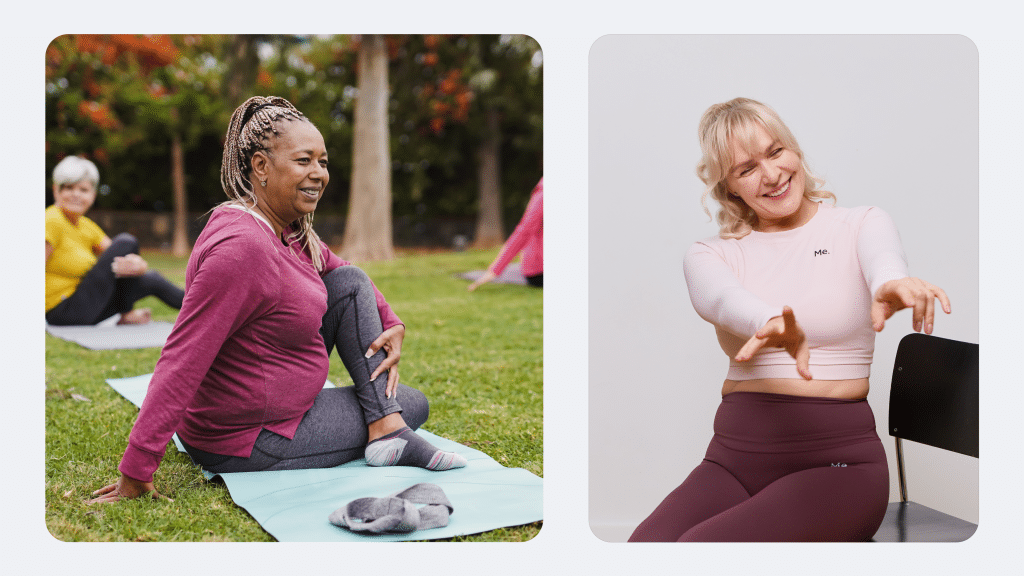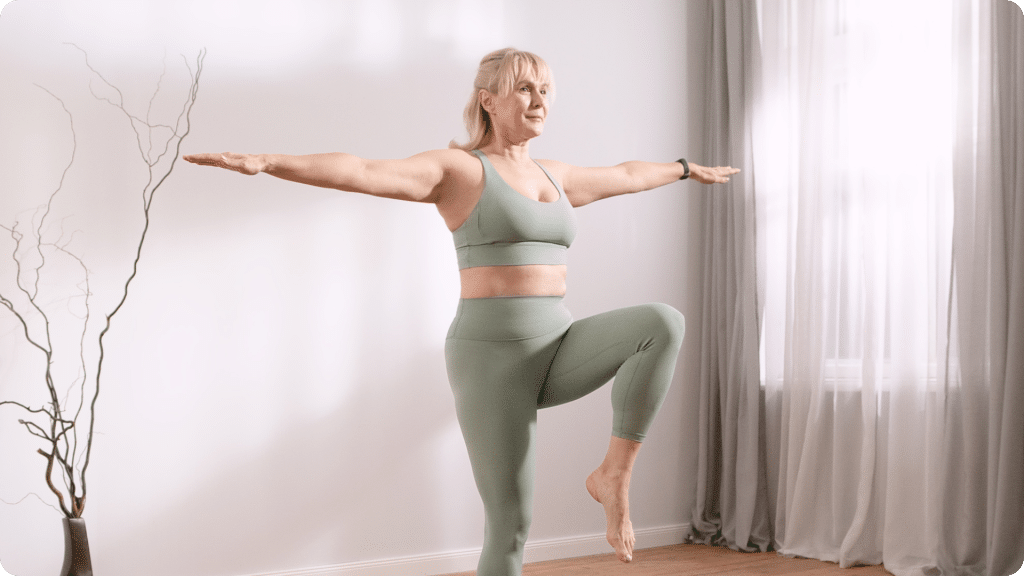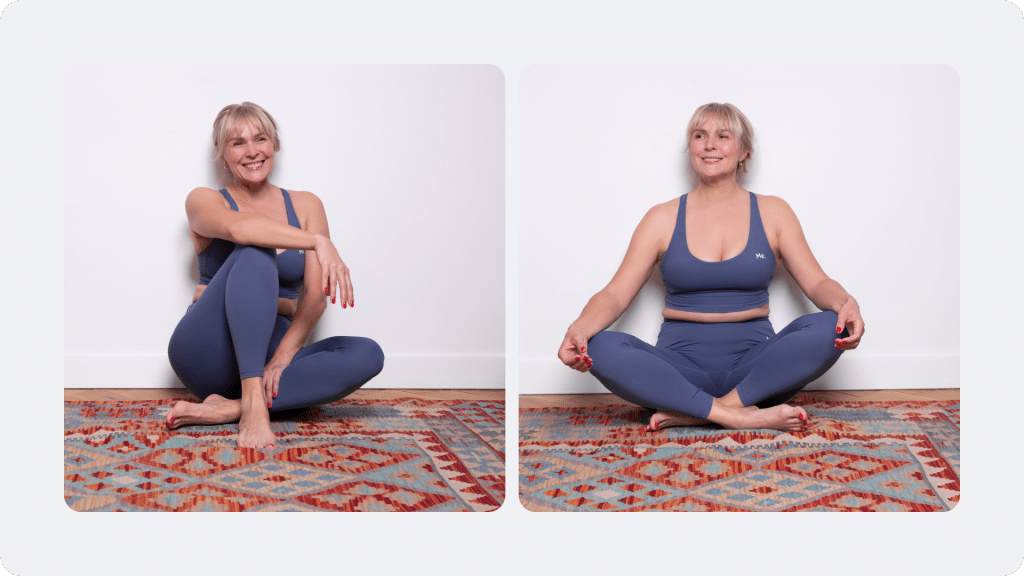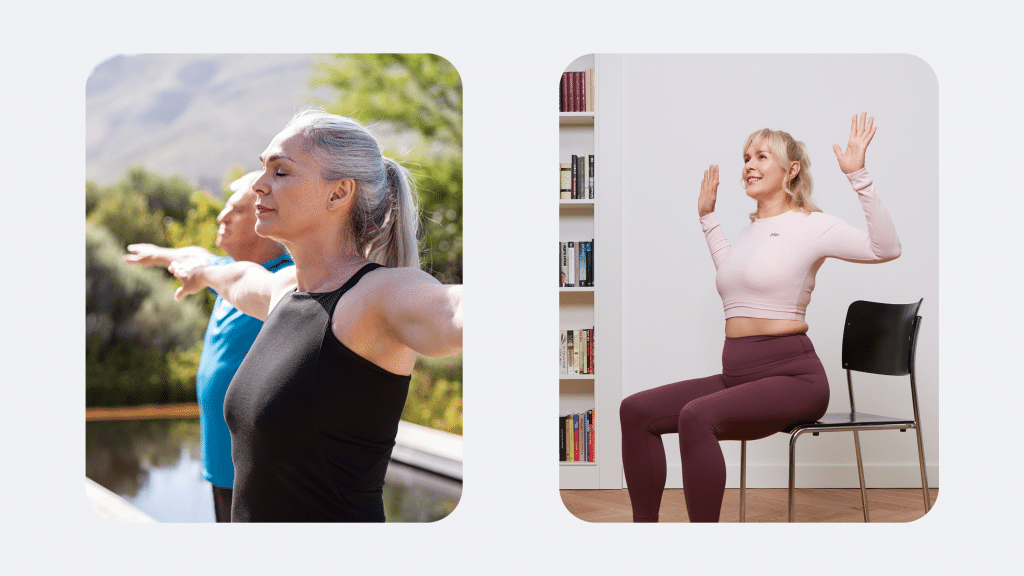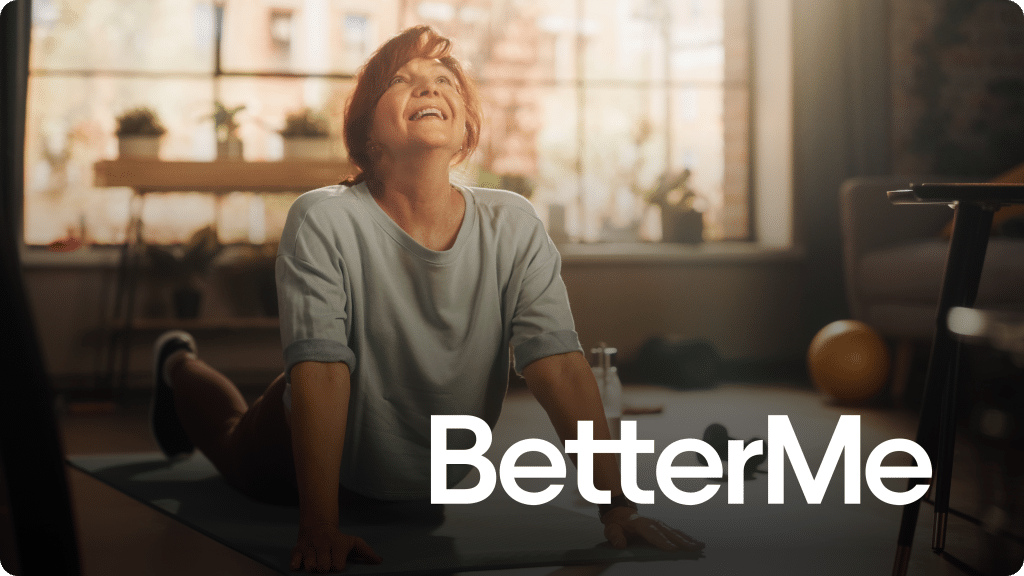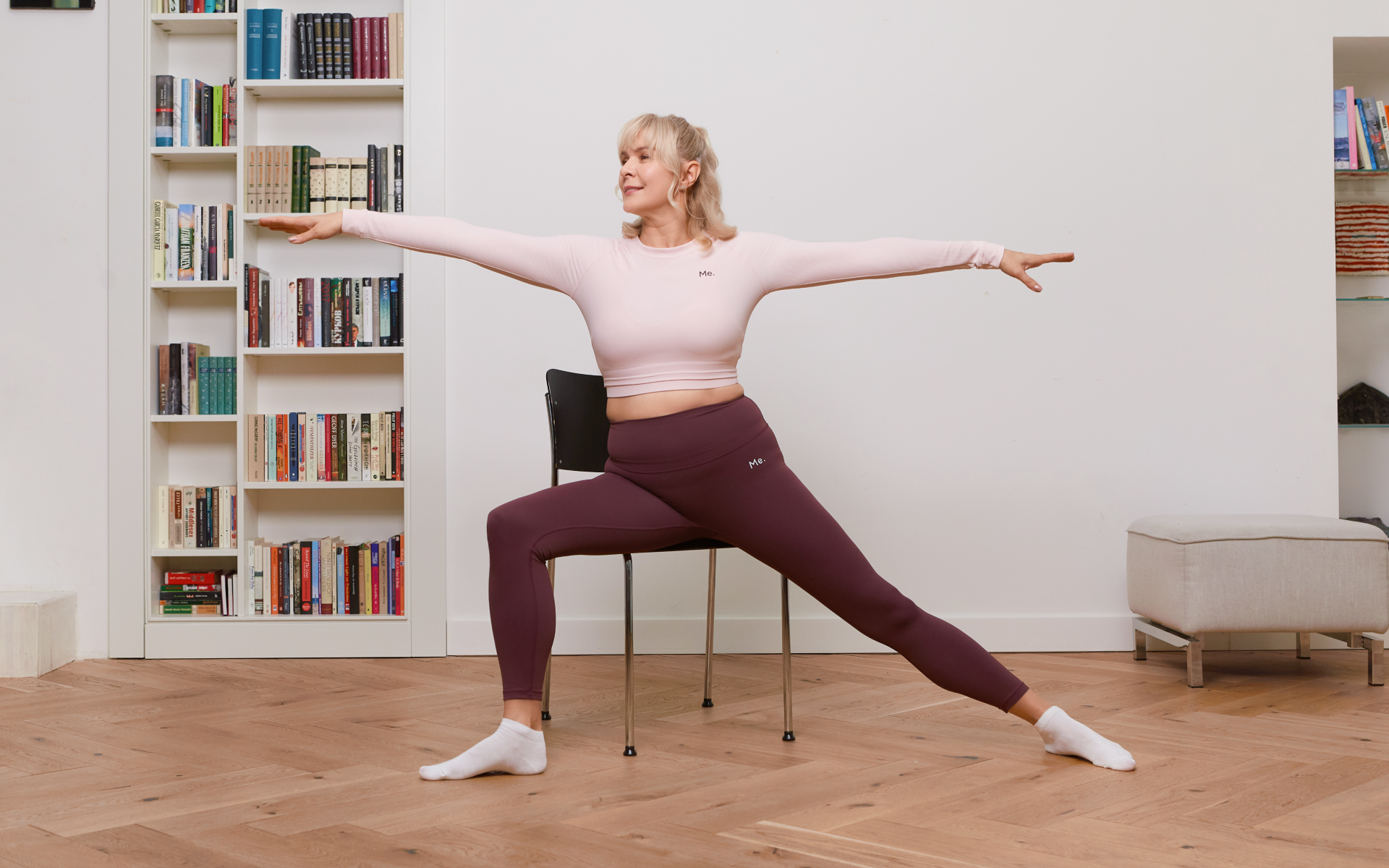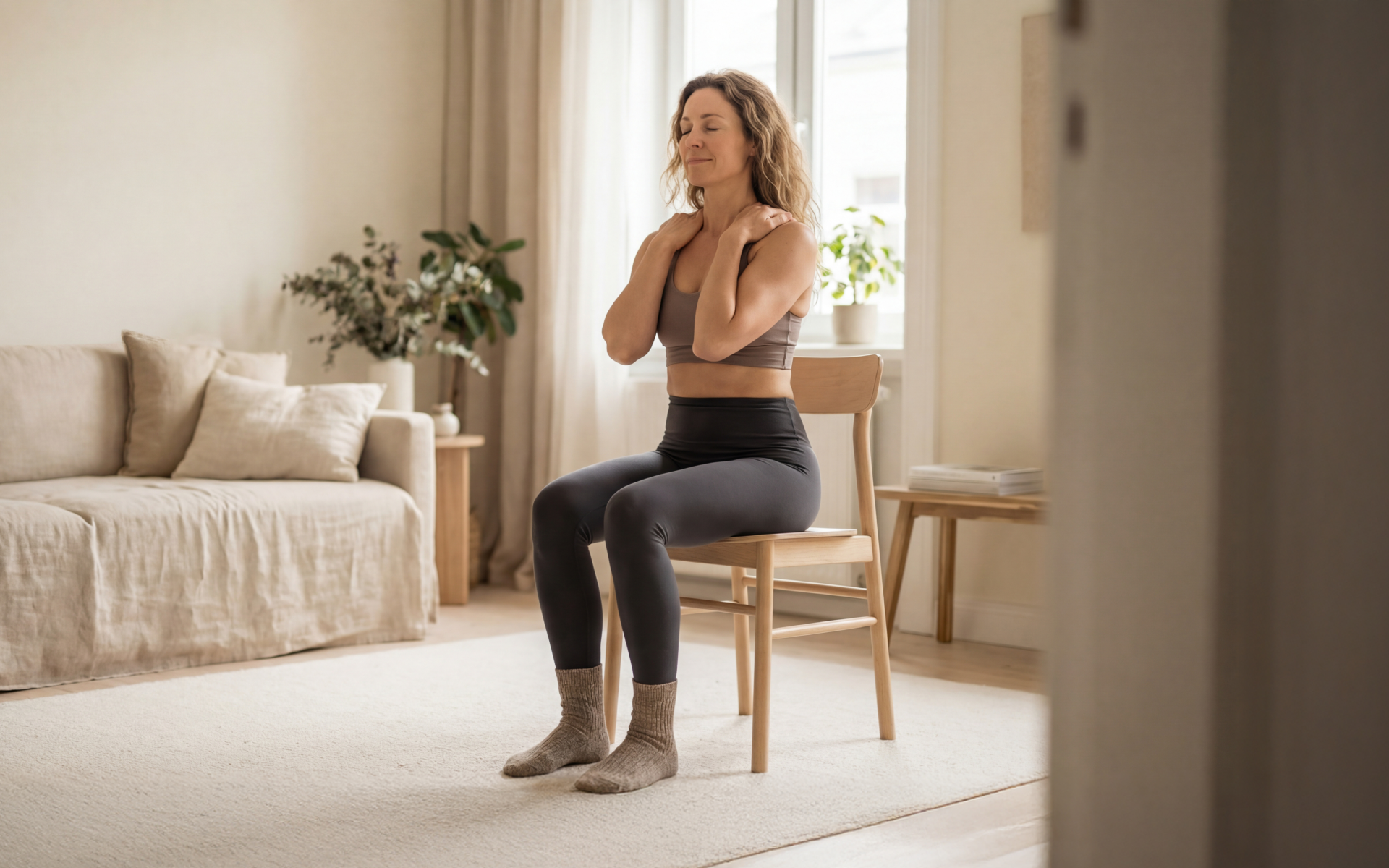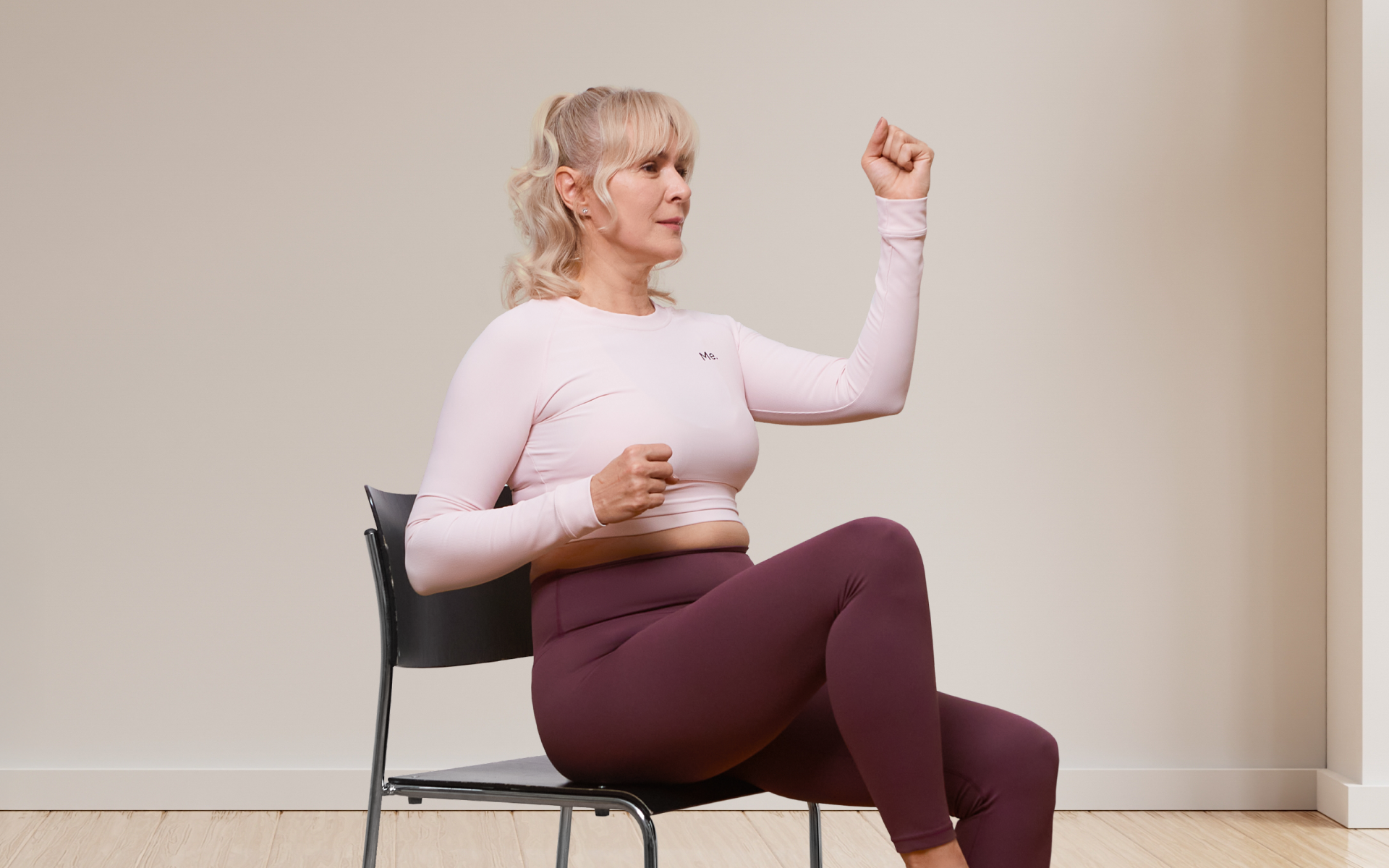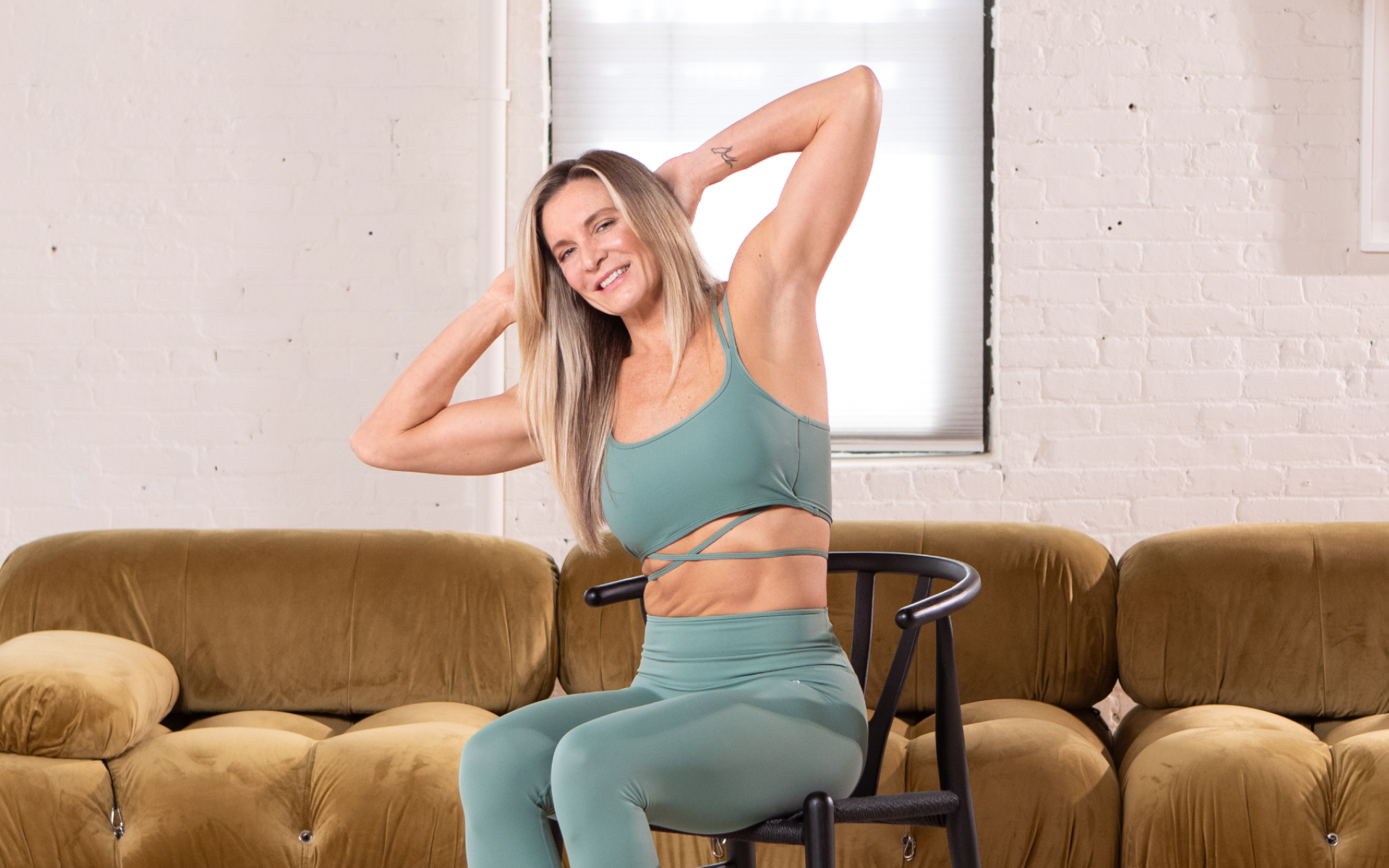Gong yoga has become increasingly popular in recent years and there are some solid reasons behind it. We all know how meditations have helped humans overcome stress and heal themselves. Gong therapy is a fairly new variation of this therapy, which promotes peace and happiness. It is a basic form of sound therapy that bathes you in gong sounds where vibrations and tones help heal your mind.
This article deeply dives into how yoga with gongs works and how you can adopt this therapy. Let’s explore this fantastic domain, which most of us aren’t familiar with.
Immersing in Sound: How Gongs Affect the Body and Mind
Sound bath yoga is based on the principle that everything in the universe and our bodies vibrates (1). When our natural frequencies go out of balance due to illness, emotional distress, or stress – sound healing aims to restore the previous harmony. With its broad frequency ranges and overtones, the gong is incredibly effective in this regard.
The intricate sounds of the gong can have a profound effect on your brain, easing you from an active, thinking state to one of deep calm or meditative focus. This can bring about relaxation, stress reduction, and healing on various levels.
Vibrational Waves and Their Impact on the Nervous System
The soothing sounds and vibrations of a gong bath can induce a state of relaxation, triggering the parasympathetic nervous system (2). This allows the stressed-out sympathetic nervous system to take a break. The parasympathetic system is in charge during calm and peaceful moments, while the sympathetic system takes over during stressful or dangerous situations.
The constant pressures of modern life can overwhelm your sympathetic nervous system. Giving the parasympathetic nervous system a chance to take charge periodically allows your nervous system to find a healthy balance.
Gong baths are also highly rejuvenating for your body, inducing deep feelings of relaxation. When you feel relaxed and the chatter in your mind has been silenced, it allows you to enjoy undisturbed and quality sleep. Many individuals report improved sleep patterns after attending regular gong yoga sessions (3).
Emotional Resonance: How Sound Influences Your Emotions
The limbic system is a vital part of your brain. It plays a crucial role in memory, learning, and emotions. The hippocampus is responsible for memory and learning, while the amygdala governs your emotions – love, hate, fear, joy, anger, and other intense feelings (4).
The amygdala is particularly sensitive to sound, which explains why what you hear can evoke such strong emotions (5). Your experiences create emotional connections to sounds, and these emotions trigger specific thoughts and actions.
Sound therapy, the therapeutic application of sound waves, is gaining recognition for its potential to promote healing and relaxation. Techniques such as guided meditation with soundscapes or music therapy sessions have demonstrated promising effects in enhancing mental well-being, and this is supported by research published in the International Journal of Nursing Studies (6).
Stress can sometimes affect your emotions and even your physical health. Although there’s no sure-fire way to remove stress from your life, you can take steps to keep it under control. A gong bath can induce deep feelings of relaxation. Many people find that even short gong meditation sessions leave them feeling refreshed and rejuvenated.
These benefits demonstrate that gong therapy can be quite effective for people who are stuck in the constant humdrum of life. Even those with traumatic past experiences and high stress levels can use this meditation to improve their physical and psychological health.
A comprehensive analysis of 400 scientific articles revealed compelling evidence that music can uplift mood and alleviate stress, with rhythm specifically offering relief from physical pain. One study highlighted how sound meditation effectively decreased tension, anger, fatigue, anxiety, and depression while fostering a sense of spiritual development (7). Research has also connected music to various health advantages, including a strengthened immune system.
Soundscapes: Creating Your Gong Yoga Environment
Gong meditation could be considered another fad activity, but it isn’t. In fact, gongs have been used as shamanic healing tools. They have been used as celebratory instruments and communication methods for thousands of years. They are part of the tradition that’s called sound bath yoga.
A gong bath is a sound healing meditation that is becoming more popular. It’s called a bath because the sounds of the instruments surround you. You don’t need any particular skills or experience, and it’s more like a relaxing meditation that anyone can do, rather than something you have to force yourself to do.
The rich and layered sounds of a gong can affect the brainwaves. It can also improve your spiritual development. This helps people shift from an active, thinking state to a deep relaxation or meditative state.
Choosing the Right Gong: Tips from the Experts
There are different types of gongs, but the ones you need for therapy are as follows:
Wind (Feng) Gong
Wind gongs exude a light and airy feel. The chimes are made from 80% copper and 20% tin, featuring a slight taper at the edges. The design features a flat center with distinct lathing, heating, and cooling methods.
Wind Gongs produce shimmering, musical tones, and their pitch can vary depending on their size and how they are played. Smaller wind gongs create higher, more piercing sounds. Meanwhile, larger ones produce deeper and more resonant tones. When struck with a soft mallet, they release a rich sound that fades quickly. On the other hand, using a drumstick produces a sound similar to the bells of a giant clock.
Chau Gong (With Rim)
They have a black outer edge and a black center. These are also lathed in the center to expose a shiny bronze surface. This design gives a chau gong its “bullseye” design.
Chau gongs produce a unique, grounding sound full of rich, mellow overtones. They can be played very softly or loudly and create powerful vibrations. The type of sound a chau gong makes is dependent on how it’s played. How it’s struck and the type of mallet used affect the sound waves, which results in either high, sharp notes or deep, booming tones.
Read more: CorePower Yoga: What Is It and How to Get Started
Descending Opera Gong
Chinese opera gongs are also called bender gongs. The center of this chime is more forward than its outer part. This creates a glissando effect in the sounds of this gong. Traditional opera gongs have a descending pitch, which means that the sound drops lower after being struck.
Ascending Opera Gong
Jin ban gongs and hand gongs have an ascending pitch, unlike the conventional opera gongs.
These beautiful instruments are known for their unique ascending glissando effect, which means that the sound rises in pitch when struck. Both types of gongs ascend in pitch, but jin ban gongs produce the highest pitch of the opera gongs.
Choosing the right gong for therapy depends on your intention and personal preferences. Think about the therapeutic goals you have in mind. For example, wind gongs are suitable for those who want to achieve mental cleansing. On the other hand, chau gongs may be better for those who are starting their mindfulness journeys.
Setting the Scene: Enhancing Your Practice with Ambient Sound
The setting when trying to heal with gong yoga should be as follows:
You lie down comfortably under a blanket and the gong session may start with breathing exercises or mantra chanting to help you relax and get ready. The gongs are then slowly introduced and their vibrations wash over your whole body, potentially helping release stuck energy. Instruments such as crystal bowls, chimes, drums, or rattles might also create a rich soundscape.
For further clarification, here’s a quick round-up of the tips you should follow to make gong yoga sessions more impactful:
- Consider the Lighting: If you do yoga in the morning, find a nook in your home that’s exposed to plenty of sunlight. If that isn’t possible or you practice in the evening hours, try to find a warm yellow light that covers your yoga corner.
- Keep the Space Simple: The easiest way to infuse peace in your yoga space is to declutter. Keep the décor tidy and take some time to discard any useless items.
- Create an Aromatic Environment: A sweet, perfumed yoga space can influence mindfulness practices. Use candles or essential oils to create a sweet-smelling environment.
- Bring Nature into the Yoga Space: Add plants in the corner where you plan to practice gong sound therapy. Research has suggested that nature can have a soothing and restorative impact on your mental and physical well-being (8). So why not invite nature into your home and flourish alongside your beautiful greenery?
People often say that gong baths have a powerful impact on their body, mind, and spirit. The best way to truly understand it is to try it for yourself.
Advanced Practices: Taking Your Gong Yoga to the Next Level
Sound yoga has many inspirations in store for you. It can be combined with different relaxation techniques to amplify the impact. An awareness of sound isn’t only used as therapy, but as an anchor for the mind to return to. You can take your gong yoga practice to the next level by combining it with other practices.
Combining Gong Yoga with Meditation and Breathwork
Letting go of anxiety and stress can be incredibly challenging. We live in a fast-paced world with immense pressure to stay ahead of the race. Gong baths combined with breathwork can help us release pressure and find a way to balance our energies.
The only prerequisite you should bring to these sessions is curiosity and openness to sounds and vibrations. Before the session, focus on your breath to calm down and relax. Immerse yourself in the sound and vibrations, directing all your attention to them. Visualize the sound waves that are washing over you.
You could also focus on a specific body part and observe how the sound and vibrations impact it. Allow the gong to fully fade before striking it again. Concentrating on the sound helps to quiet any distracting thoughts. Breathwork helps you realize that you experience the world through your body. It teaches you to cultivate a conscious connection with your breath.
Read more: Viniyoga: A Personalized Approach to Yoga Practice
The flow of gong yoga is as follows:
- Start with a series of gentle yoga postures to warm up the body. Focus on mindful movements and connecting your breath with these movements.
- Transition into Savasana (corpse pose) and let the gong player start with a gong bath. As you lie down, focus on your breathing and allow the vibrations to wash over you.
- The gong player may guide you through each meditation state. They help you focus on your mind and deepen your relaxation.
- Focus on your breathing throughout the sessions. Try to lengthen the inhales and exhales or visualize the sound waves moving through your body with each breath.
Stay in Savasana after the gong bath ends. Allow the vibrations to resonate within you as you progress in the experience. You can also write a journal about your experience if you wish. Write about any emotions, insights, or physical sensations during the practice.
Sound Therapy Beyond Yoga: Exploring Other Applications
The different types of sound therapy can be reduced to the following categories:
1. Active Sound Therapy
This therapy requires the clients to participate audibly, not just receive the sound vibrations. This powerful form of sound therapy increases the sense of self-empowerment (9). It also promotes a sense of connectedness and internalizes intentions.
2. Energy Therapy
Sound therapy uses sound waves, like long, clear notes, to directly impact your physical body and energy.
3. Facilitated Sound Therapy
Sound therapy can help change brain patterns and how your brain works. It can be used with hypnosis or other therapies to make it easier to release emotions and change how you think and act.
However you choose to explore sound therapy, the one thing that unifies this field is the use of beautiful tones to ease the mind and body. Whether you play music or the music is played for you, don’t overlook the magic of sound, as it can heal you emotionally.
Interactive Element: Build Your Own Gong Yoga Routine
Do you want to create a personalized yoga with gongs routine that resonates with your needs and goals? Whether you want stress relief or to enhance your focus, you should craft a routine that guides you through self-discovery.
Personalized Routine Builder
Here’s a guide to creating a personalized yoga routine with gongs:
- Set Your Intention: Why do you want to start gong yoga?
- Choose Yoga Poses: Select the yoga postures that align with your intention and physical capacity.
- Integrate the Gongs: Decide how to add gongs to your yoga sessions.
- Select Gong Technique: Talk to your gong player about the desired effects – emotional release, stress reduction, or simply a few good hours of meditation.
- Experiment and Adjust: Be open to different poses, gong techniques, and sequencing combinations.
You should keep in mind that your personalized yoga routine should be a joyful experience. Allow your intuition to guide you, and listen to your body.
Whether you want to learn how to exit the spiral of self-harming behavior, overcome anxiety, cure insomnia or simply give yourself the time and space to bliss out and soak up the moment of complete peace and quiet – BetterMe: Meditation & Sleep app is exactly the tool for that! If you don’t take care of number one, who will?
Visual Guide: Gong Yoga Poses and Sound Techniques
The steps to perform gong yoga are as follows:
- Choose a quiet, comfortable space where you won’t encounter any interruptions.
- Gather any yoga props you may need, such as blocks, straps, or yoga mats.
- Start with 5-10 minutes of gentle stretches to warm up your body.
- Perform child pose to help release tension in the back and shoulders.
- Perform a cat-cow pose to warm up the spine and improve flexibility.
- Perform a supine twist to massage the internal organs and release spinal tension.
- Do a corpse pose as the final resting pose to relax your body completely.
- Play the gong softly to create sound variations.
- If you are playing a recording, start playing it as you begin Savasana.
- Gently bring your awareness back to your surroundings and slowly sit up.
Note: Gong yoga is a personal journey. Be open to the experience and explore the healing power of sound.
FAQs
What is the best way to start practicing gong yoga?
Focusing on the vibrations can help you maximize your gong yoga practice. Start listening to the sounds and feel the vibrations. Imagine the sound waves are traveling through your body. You can also focus on a single body part and analyze the effect of the vibrations on that spot.
Can anyone practice gong yoga regardless of age or fitness level?
Gong yoga practice is suitable for people of all ages and fitness levels. It is a low-impact exercise suitable for those who can’t engage in vigorous exercises.
How does gong yoga differ from other forms of yoga?
Healing with gong yoga is different from other types of yoga as it uses the healing sounds of gongs. While regular yoga focuses on movements, breathing, and meditation, gong yoga includes sound to enhance the experience and its benefits for the mind-body balance.
What should I expect from a gong yoga session?
In a gong yoga session, you can expect gentle yoga poses combined with the soothing sounds of gongs. The sound vibrations help deepen relaxation, reduce stress, and enhance meditation, which creates a calming experience for the mind and body.
How often should I practice gong yoga?
You can practice gong yoga as often as you wish, but 1-2 times per week is a good starting point to experience its benefits, such as deep relaxation and stress relief.
What kind of gong should I use for my practice?
It is best to use a symphonic gong for gong yoga as this produces a wide range of harmonic tones that promote relaxation and meditation. A 28-32-inch gong is ideal for beginners as it offers balanced sound without being overwhelming.
How can I combine gong yoga with other yoga styles?
You can combine gong yoga with different types of yoga by using the gong during relaxation or meditation phases. For example, play the gong during Savasana to deepen relaxation after a Vinyasa or Hatha session.
You can also use gong sound therapy during breathwork or meditation in styles such as Kundalini or Yin yoga to enhance focus and calmness.
Conclusion
Gong Yoga is a new meditation technique, but it is highly sought after. Its distinguished way to control stress and induce satisfaction has impressed its practitioners. The gongs transform the obstructed feelings by cutting the thoughts to create healthy patterns. Although high-quality research on this domain is currently minimal, those who regularly attend gong baths find themselves in a better place after sessions.
DISCLAIMER:
This article is intended for general informational purposes only and does not serve to address individual circumstances. It is not a substitute for professional advice or help and should not be relied on for making any kind of decision-making. Any action taken as a direct or indirect result of the information in this article is entirely at your own risk and is your sole responsibility.
BetterMe, its content staff, and its medical advisors accept no responsibility for inaccuracies, errors, misstatements, inconsistencies, or omissions and specifically disclaim any liability, loss or risk, personal, professional or otherwise, which may be incurred as a consequence, directly or indirectly, of the use and/or application of any content.
You should always seek the advice of your physician or other qualified health provider with any questions you may have regarding a medical condition or your specific situation. Never disregard professional medical advice or delay seeking it because of BetterMe content. If you suspect or think you may have a medical emergency, call your doctor.
SOURCES:
- WHAT IS SOUND HEALING? (2007, researchgate.net)
- Effect on Relaxation of a Live Versus Recorded Sound Bath and a Passive Relaxation Session (2023, researchgate.net)
- The effect of yoga on sleep quality and insomnia in women with sleep problems: A systematic review and meta-analysis (2020, researchgate.net)
- Understanding Emotions: Origins and Roles of the Amygdala (2021, ncbi.nlm.nih.gov)
- Music-Evoked Emotions—Current Studies (2017, ncbi.nlm.nih.gov)
- Music Therapy for People With Dementia (2004, researchgate.net)
- The Effect of Music on the Human Stress Response (2013, ncbi.nlm.nih.gov)
- The Impact of Nature Exposure on Mental Health and Well-Being (2023, researchgate.net)


